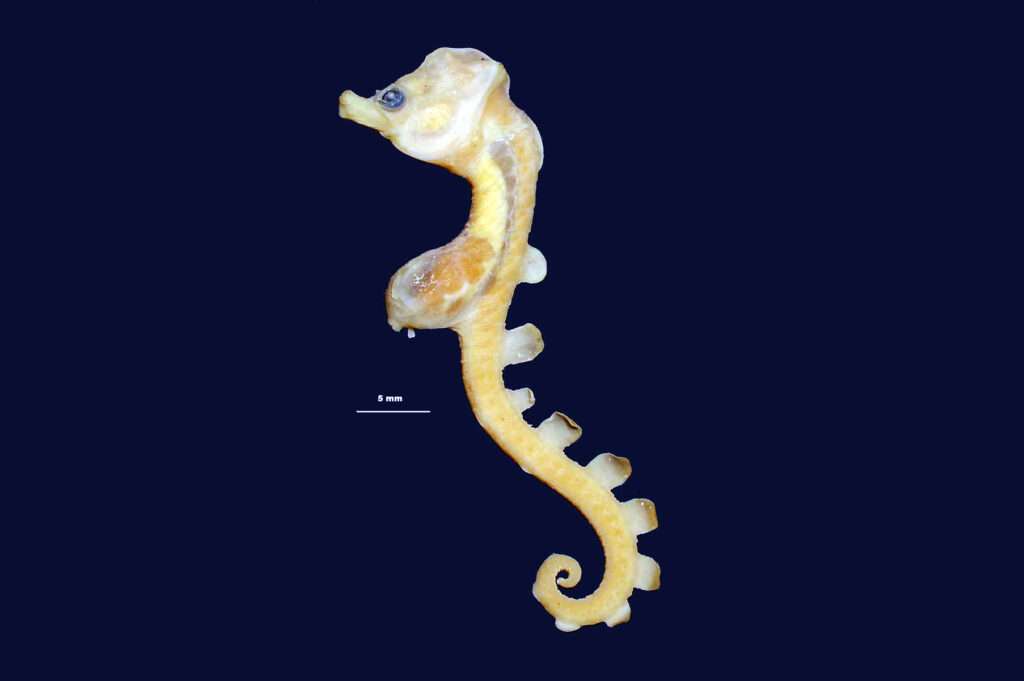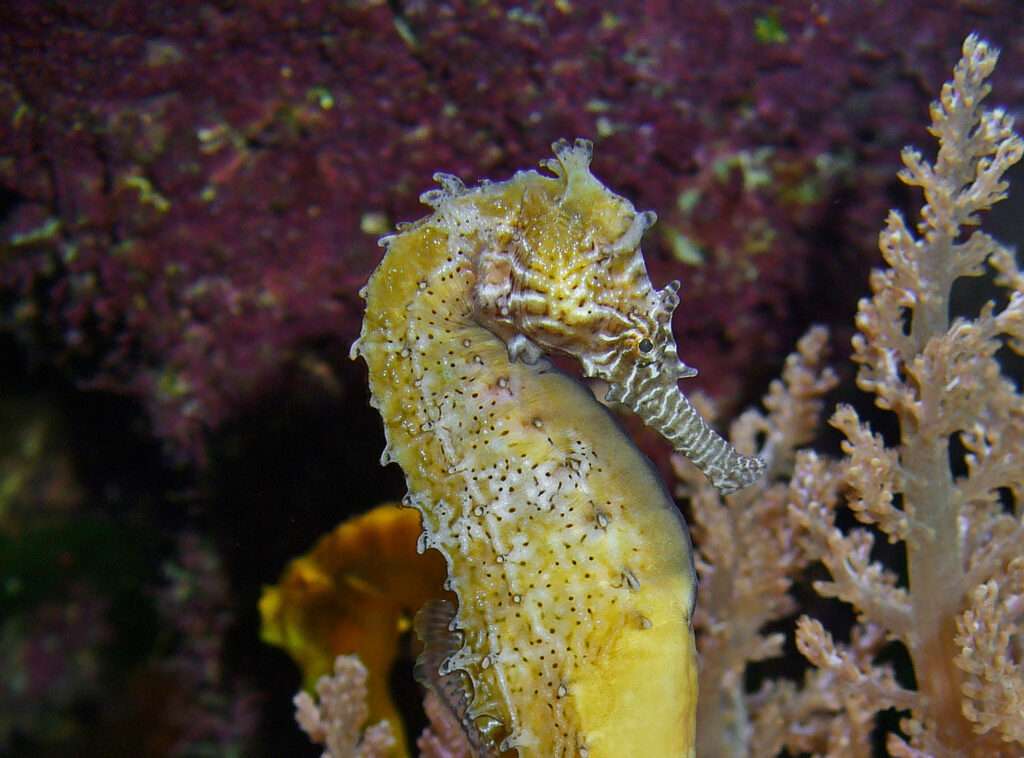
A small member of the Hippocampus genus is the contradictory seahorse (Hippocampus paradoxus). The sole specimen was discovered in 2006 after being hidden in a museum since its capture in 1995. The sole female specimen of the uncommon and paradoxical Paradoxical Seahorse, which was found in south-western Australia, lacks a dorsal fin and has a row of fleshy lobes that resemble fins along its back. Due to the body’s extreme compression and fleshiness, the external bony segments are not well defined. Of all the species in the genus Hippocampus, this particular species has the fewest trunk rings and dorsal-fin rays.
Description
The seahorse was given the species name paradoxus because it is paradoxical and distinct from all other members of the genus Hippocampus. H. minotaur, another seahorse, is its closest relative. This species of seahorse exhibits sexual dimorphism like all others. The brood pouch is thought to be connected to the seahorse’s breast and joined to the ventral side of the animal close to the top of the tail. This hypothesis, which is supported by the species’ resemblance to H. minotaur, hasn’t been verified since no male specimens have been gathered. The sole specimen, a female with a vertical height of 6.5 cm, is known. This species has 11 pectoral fin rays and 8 trunk rings.

The majority of this fish’s body is made up of a series of lobes that resemble tiny fins. The lobes begin close to the midline of the seahorse’s trunk and extend all the way to its tail. Although the first lobe resembles a tiny dorsal fin, it is not one. This species of seahorse is unique within its genus since it lacks a dorsal fin. The holotype has a yellow-cream tint and has numerous little brown dots all over it. The true color of this animal in the wild is unknown because it’s possible that it changed while the specimen was being preserved in formaldehyde.
Habitat
On the western edge of the Great Australian Bight, south-west of Esperance, Western Australia, the holotype was found. This species was discovered at about 102 meters of depth (335 ft). The collecting site was close to the substrate in the benthic zone at the ocean’s bottom (which in this case was sand). The collection site was teeming with numerous varieties of sponges, lace corals, and bryozoans. The collecting site’s waters are rather warm.
Biology
The Great Australian Bight’s bed is swept by high intensity waves at this level, resulting in swaths of rippling sand interspersed with stabilized “islands’ ‘ of sponge and bryozoans. The holotype was collected from the mid-continental shelf beneath (102 m). On a rough substrate of calcareous sand, the location features a complex, very diversified assemblage of bryozoans, including Adeona, a number of bushy flexible species (Family Catenicellidae), “lace corals” (Family Phidoloporidae), and several sponges. Eleven hydrated oocytes measuring about 2 mm in diameter were contained within the considerably enlarged abdomen of the female holotype that was recovered in late July.
Mating behavior
The male in a brood pouch carries the eggs.
Table





